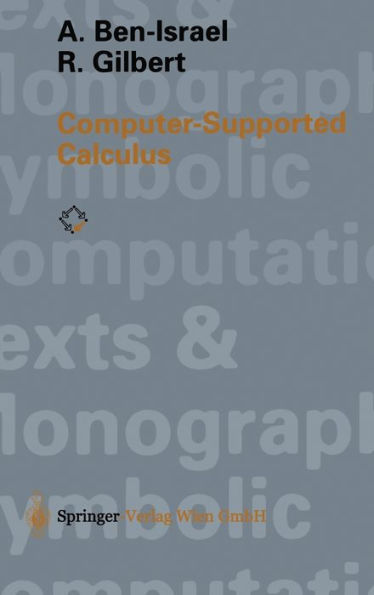Computer-Supported Calculus
This is a new type of calculus book: Students who master this text will be well versed in calculus and, in addition, possess a useful working knowledge of one of the most important mathematical software systems, namely, MACSYMA. This will equip them with the mathematical competence they need for science and engi neering and the competitive workplace. The choice of MACSYMA is not essential for the didactic goal of the book. In fact, any of the other major mathematical software systems, e. g. , AXIOM, MATHEMATICA, MAPLE, DERIVE, or REDUCE, could have been taken for the examples and for acquiring the skill in using these systems for doing mathematics on computers. The symbolic and numerical calcu lations described in this book will be easily performed in any of these systems by slight modification of the syntax as soon as the student understands and masters the MACSYMA examples in this book. What is important, however, is that the student gets all the information necessary to design and execute the calculations in at least one concrete implementation language as this is done in this book and also that the use of the mathematical software system is completely integrated with the text. In these times of globalization, firms which are unable to hire adequately trained technology experts will not prosper. For corporations which depend heavily on sci ence and engineering, remaining competitive in the global economy will require hiring employees having had a traditionally rigorous mathematical education.
"1014534706"
Computer-Supported Calculus
This is a new type of calculus book: Students who master this text will be well versed in calculus and, in addition, possess a useful working knowledge of one of the most important mathematical software systems, namely, MACSYMA. This will equip them with the mathematical competence they need for science and engi neering and the competitive workplace. The choice of MACSYMA is not essential for the didactic goal of the book. In fact, any of the other major mathematical software systems, e. g. , AXIOM, MATHEMATICA, MAPLE, DERIVE, or REDUCE, could have been taken for the examples and for acquiring the skill in using these systems for doing mathematics on computers. The symbolic and numerical calcu lations described in this book will be easily performed in any of these systems by slight modification of the syntax as soon as the student understands and masters the MACSYMA examples in this book. What is important, however, is that the student gets all the information necessary to design and execute the calculations in at least one concrete implementation language as this is done in this book and also that the use of the mathematical software system is completely integrated with the text. In these times of globalization, firms which are unable to hire adequately trained technology experts will not prosper. For corporations which depend heavily on sci ence and engineering, remaining competitive in the global economy will require hiring employees having had a traditionally rigorous mathematical education.
119.0
In Stock
5
1

Computer-Supported Calculus
800
Computer-Supported Calculus
800
119.0
In Stock

Product Details
| ISBN-13: | 9783211829240 |
|---|---|
| Publisher: | Springer-Verlag New York, LLC |
| Publication date: | 01/28/1999 |
| Series: | Texts & Monographs in Symbolic Computation Series |
| Pages: | 800 |
| Product dimensions: | 6.88(w) x 9.85(h) x 1.17(d) |
From the B&N Reads Blog
